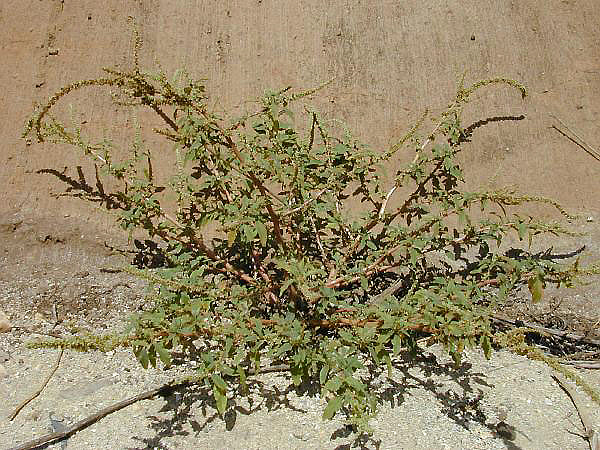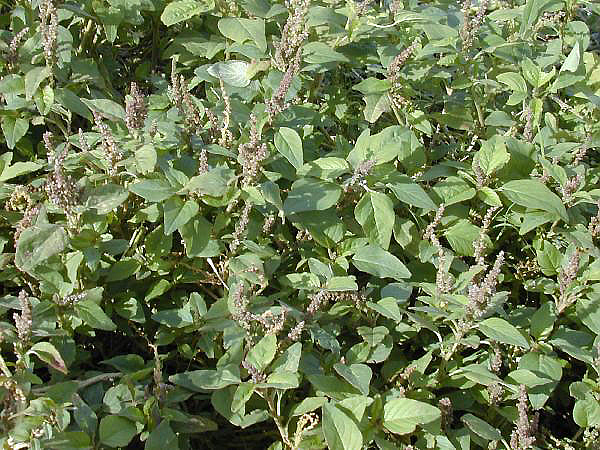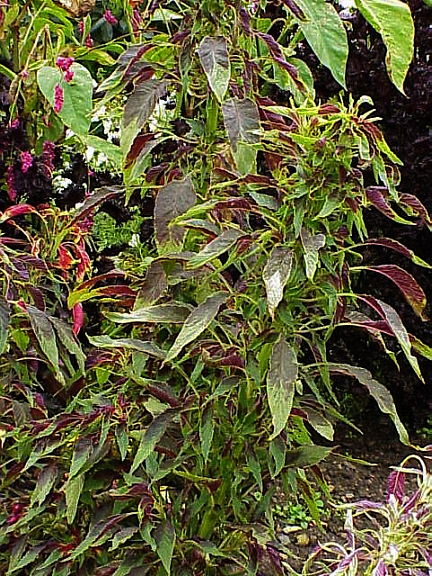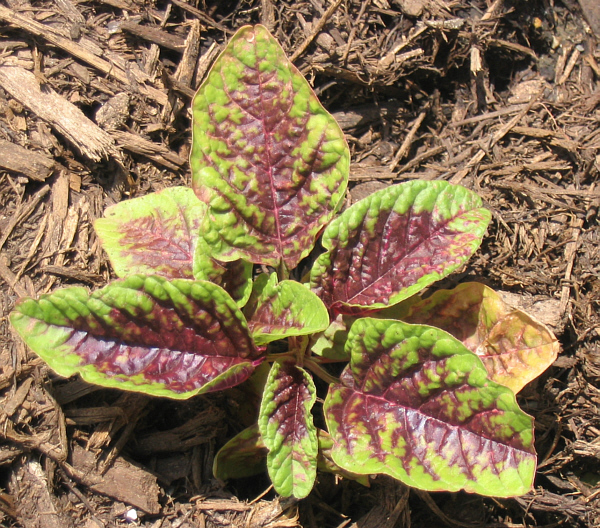

Zitierweise / cite as:
Carakasaṃhitā: Ausgewählte Texte aus der Carakasaṃhitā / übersetzt und erläutert von Alois Payer <1944 - >. -- Anhang A: Pflanzenbeschreibungen. -- Amaranthus L. sp. -- Fassung vom 2007-07-27. -- URL: http://www.payer.de/ayurveda/pflanzen/amaranthus.htm
Erstmals publiziert: 2007-07-27
Überarbeitungen:
Anlass: Lehrveranstaltung SS 2007
©opyright: Dieser Text steht der Allgemeinheit zur Verfügung. Eine Verwertung in Publikationen, die über übliche Zitate hinausgeht, bedarf der ausdrücklichen Genehmigung des Verfassers
Dieser Text ist Teil der Abteilung Sanskrit von Tüpfli's Global Village Library
WARNUNG: dies ist der Versuch einer
Übersetzung und Interpretation eines altindischen Textes. Es ist keine
medizinische Anleitung. Vor dem Gebrauch aller hier genannten Heilmittel wird
darum ausdrücklich gewarnt. Nur ein erfahrener, gut ausgebildeter ayurvedischer
Arzt kann Verschreibungen und Behandlungen machen!
Falls Sie die diakritischen Zeichen nicht dargestellt bekommen, installieren Sie eine Schrift mit Diakritika wie z.B. Tahoma.
Verwendete und zitierte Werke siehe: http://www.payer.de/ayurveda/caraka0001.htm

Abb.: Amarantus spinosus L. = Dorniger Amaranth
[Bildquelle: Wikipedia]

Abb.: Amaranthus viridis L. = Grüner Amaranth
[Bildquelle: Wikipedia]

Abb.: Amaranthus tricolor L. = Surinamesischer Fuchsschwanz,
Gemüseamaranth
[Bildquelle: Wikipedia]

Abb.: Amaranthus tricolor L. = Surinamesischer Fuchsschwanz,
Gemüseamaranth, Jungpflanze
[Bildquelle: Wikipedia]
Drury:
"Amarantus frumentaceus (Buch.) N. O. Amarantaceae. Poong-kirai, Tam.
Description.—Stem herbaceous, erect; leaves long-petioled, broad-lanceolate, acute; panicles terminal, erect; sepals subulate, acute; stamens five; stigmas three; seed subcompressed, smooth; utricles wrinkled. Dec. Prod. xiii. s. 2, p. 265.—Roxb. Flor. Ind. iii. 699.— Wight Icon. t. 720.-------Mysore. Coimbatore.
Economic Uses.—This plant is extensively cultivated in the Coimbatore district, chiefly for the flour of its seeds, which is a great article of diet among the natives. Besides the above, there are several other species of Amaranths used as vegetables by the natives, such as the A. polygonoides (Roxb.), considered very wholesome, especially for convalescents ; the A. oleraceus (Linn.), of which the several varieties are cultivated for diet, especially the Var. giganteus, which is about 4 to 8 feet high, and with a thick succulent stem, which is eaten as a substitute for asparagus.—Roxb. Ainslie.
Amarantus spinosus (Linn.) Do.
Kante-mat, Duk. Mulluk-kirai, Tam. Mundla-tota-kura, Nalla-doggali, Tel. Muilan-chira, Mal. Kanta-mari, Beng.
Description.—Erect, 1-3 feet, somewhat striated, glabrous, reddish; leaves long-petioled, rhomb-ovate, or lanceolate-oblong, with two spines in the axils; panicles sparingly branched; spikes erect, cylindric, acute, terminal ones long, stiffish, lateral ones middle-sized; flowers dense, green; utricles 2-3 cleft at the top, somewhat wrinkled; bracts unequal, bearded; seed lenticular, polished, black.—Dec. Prod. xiii. s. 2, p. -----Roxb. Flor. Ind. iii. 611.—Wight Icon. t. 513.— Rumph. Amb. v. t. 83, fig. 1.-------Peninsula. Bengal. Malabar.
Medical Uses. —Emollient poultices are made of the bruised leaves. In the Mauritius a decoction of the leaves and root is administered internally as diuretic.—(Bouton, Med. Pl. of the Mauritius.) The A. campestris (Willd.) is considered demulcent, and is given in decoction in cases of strangury—(Ainslie). The A. polygamus (Linn.) is used in bilious disorders, and as an aperient—Long, Indig. Plants of Bengal."
[Quelle: Drury, Heber <1819 - 1872>: The useful plants of India : with notices of their chief value in commerce, medicine, and the arts. -- 2d ed. with additions and corrections. London : Allen, 1873. -- xvi, 512 p. ; 22 cm. -- s.v.]